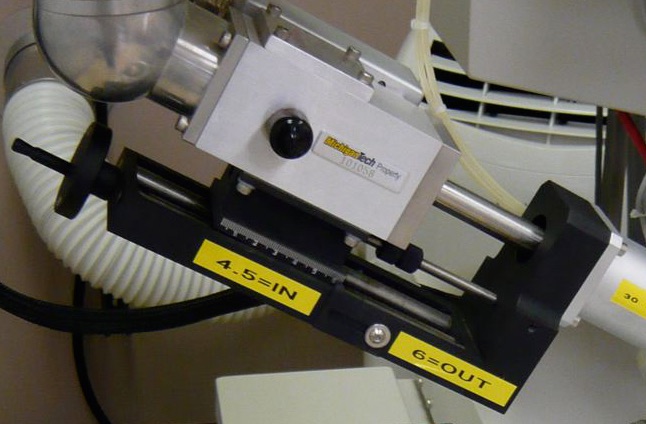X-Ray Signals
X-ray signals are generated from a micro volume size sample of material, ~1–5 µm3, and provide valuable information about the elemental composition of the sample. X-rays are formed when the high-energy beam electrons eject inner shell electrons from the atom. An electron from an outer shell fills the vacancy, and the difference between the binding energies of the two orbitals is conserved as an emitted X-ray photon. Each atom has a unique X-ray spectral "fingerprint" composed of emission lines. These lines can be identified with standard published emission line tables for all elements. Software programs are also available and widely used to help with emission line identification.
EDS
Collecting X-rays is more difficult than collecting SEs and BSEs. X-ray signals may be collected using either a crystal-based detector known as the Wavelength Dispersive Spectrometer (WDS) or a semiconductor based detector known as an Energy Dispersive Spectrometer (EDS). The FE-SEM in the ACMAL facility utilizes only an EDS system. EDS is the most common X-ray detector found on SEMs. Physically, the EDS detector has a shaft that penetrates the SEM chamber wall to place the sensor very close to the sample. It is easily recognizable with its liquid nitrogen tank. Liquid nitrogen is used to reduce electronic noise in the detected X-ray signal. This type of detector is relatively less expensive than the WDS, and it senses the entire spectrum of X-ray signals of varying energy from the sample at once. A disadvantage is that it is not sensitive enough to detect trace amounts of elements in the sample. Another disadvantage of EDS systems is that they cannot separate closely spaced emission lines which overlap on the X-ray EDS spectrum.
